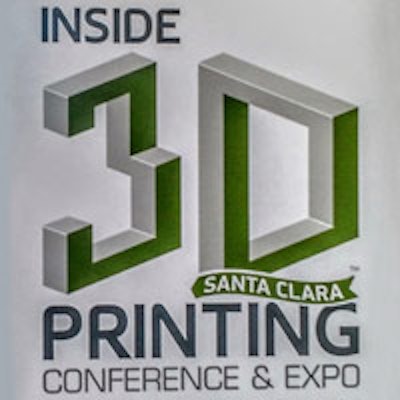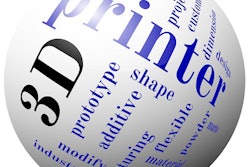
3D printing has a very bright future in dentistry, according to Rich Motto, the founder and CEO of CadBlu. During his presentation at the recent 2015 Inside 3D Printing Conference & Expo in Silicon Valley in California, Motto explained several trends that are shaping digital dentistry's immediate future.
“All the traditional manufacturing ... is moving to CAD/CAM, depending on the application.”
Computer-aided design and manufacturing (CAD/CAM) have been around in dentistry for 30 years, but only about 4% of dentists currently use the technologies, according to Motto. He thinks the industry can expect imaging and CAD/CAM to replace traditional manufacturing in the near future for a number of reasons, including better predictability, cost-effectiveness, increased accuracy, and increased efficiency.
"So far the technology has changed the market," Motto said. "All the traditional manufacturing -- 80% -- is moving to CAD/CAM, depending on the application."
But what's driving the change? Here are just six reasons that Motto thinks will drive dentistry's adoption of CAD/CAM.
1. Dental service organizations are growing
Dental service organizations (DSOs) currently make up about 7% of the dental market, but they are expected to grow to about 20% of the market, according to Motto. This is important, because DSOs give dentists the ability to invest in new technology, he noted.
In addition, many of the dentists joining DSOs are just out of school (and often plagued with massive student loans). These students are more likely to have worked with newer, digital technologies in school and are also more likely to want to incorporate those technologies in their practices.
 CadBlu was one of the dozens of exhibitors at the Inside 3D Printing Conference & Expo, held October 20-22 in Santa Clara, CA.
CadBlu was one of the dozens of exhibitors at the Inside 3D Printing Conference & Expo, held October 20-22 in Santa Clara, CA.2. The industry is becoming more open
When CAD/CAM was first introduced to dentistry, the systems were closed, limiting what dental labs could do with the technology. However, around 10 years ago, the systems started to open up, allowing labs more freedom to choose the type of material they wanted to use. This helped to bring about the first wave of digital adoption in dentistry, and the trend is continuing today, according to Motto.
3. New materials are being developed
As CAD/CAM matures, more manufacturing materials are being created. Specifically, in August the U.S. Food and Drug Administration (FDA) approved the first 3D-printed material other than metal for dentures, Motto said. Dentca, the company that makes the newly approved resin, states that the process can make dentures directly from 3D models within five days and 45 minutes of chair time.
"This is big," he explained. "They [the material's creators] had to get the approval from scratch, which takes a long time."
The new dentures material is also important because as baby boomers age, more patients will want dentures. Being able to quickly 3D manufacture dentures may be an incentive for more dentists to adopt the technology.
4. Everything is getting patient-customized
CAD/CAM is allowing dentists to customize appliances specifically for patients in ways that have not before been possible. Everything from sleep apnea appliances and sports mouthguards to splints and tools for treating temporomandibular joint disorders can now be created specifically for a patient with accuracy down to a couple microns, enabling dentists to provide patients a better experience, according to Motto.
One incarnation of this trend is in orthodontics, where dentists can now use digital dentistry to create behind-the-teeth, patient-customized braces. The technology lets a dentist design the desired outcome for the patient and use software to move back step by step to the teeth's current position. Then, the dentist can manufacture the braces designed specifically for the patient at each stage.
"They actually customize every bracket to the back of your tooth, so when you smile you don't see them," Motto explained. "All 3D-printed, every one customized, patient-specific."
5. General dentists are able to do more
CAD/CAM technologies are allowing general dentists to do procedures that were once reserved solely for specialists, which can bring more revenue to practices, Motto explained. This change is especially being seen with implants, because accurate surgical guides can be milled for relatively cheap.
DSOs want general dentists to do simple implants, Motto said. What CAD/CAM technology is doing for implants is "just like Invisalign did" with orthodontics, he added.
6. Dentists are adopting digital imaging
More dentists are buying intraoral and extraoral scanners, according to Motto. This may help drive CAD/CAM, because once a digital scan is taken, it is easy to then use it to manufacture restorations, surgical guides, dentures, and more.
"As impression scanning expands from 5% to 50% ... the need for printed models will explode," he explained. "My basic conclusion is that additive manufacturing has a very bright future in dentistry."



















